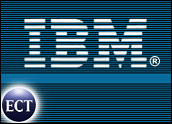IBM has won the right to build a powerful Linux-based supercomputer for the Department of Defense (DOD) that will be used to design and test weapons systems, the company announced Tuesday.
Nicknamed “Stryker,” the machine will run at a speed of 10 trillion calculations per second, placing it among the 20 fastest computers in the world. It will also be the largest Linux-based machine owned by the U.S. military, IBM said in a statement.
The supercomputer will consist of 1,186 IBM e325 servers running a total of more than 2,300 64-bit Advanced Micro Devices (AMD) processors and utilizing SuSE Linux. It will be installed at the Army Research Laboratory’s Major Shared Resource Center in Aberdeen, Maryland.
New Defense Challenges
“This increase in computing capability will give DOD scientists and engineers the ability to solve complex, mission-critical physics problems in a time frame that can…assist our staff in solving some of our nation’s most complex defense challenges,” said Charles Nietubicz, director of the MSRC.
Neither IBM nor the Department of Defense disclosed the financial terms of the deal, which is the second major supercomputer contract Big Blue has landed in as many weeks.
Two in a Row
Last week IBM nabbed a deal to build two systems for the U.S. Navy, including one that will likely rank among the top five supercomputers in terms of processing power once completed later this year. IBM said that deal was worth “tens of millions of dollars.”
While Big Blue has of late won the upper hand among supercomputer companies — it lays claim to 44 percent of the top 500 supercomputers in the world, compared to 28 percent for its main rival, Hewlett-Packard — IBM spokesperson Jill Holt said building supercomputers is about more than bragging rights.
“We definitely feel these installments will yield improvements and advances that will benefit our enterprise customers in the future,” Holt told the E-Commerce Times. “The lessons we learn through this type of cutting-edge installment help advance our technology.”
Good News for Linux, AMD
The new deal was a win both for AMD and for the Linux open-source platform. AMD has pushed its 64-bit processing environment as the answer for a range of applications that need access to extra memory.
An increasing number of supercomputers are being built to run Linux. Just last week, NASA tapped Silicon Graphics and Intel to build a Linux-based supercomputer to simulate space exploration. Once deployed, that system is expected to be the largest Linux machine in the world, beating out a 1,000-processor system developed for the National Center for Supercomputing Applications.
Jack Dongarra, director of the Innovative Computing Lab at the University of Tennessee and one of the compilers of the top 500 list of supercomputers, said the next version of the list, due out in November, should be the first to include information on operating systems.
“We have certainly seen an increase in Linux on the list,” Dongarra told the E-Commerce Times. “The fact that some of the top deployments are showing up on Linux is what prompted us to take a closer look at what a system is running.”























































Social Media
See all Social Media